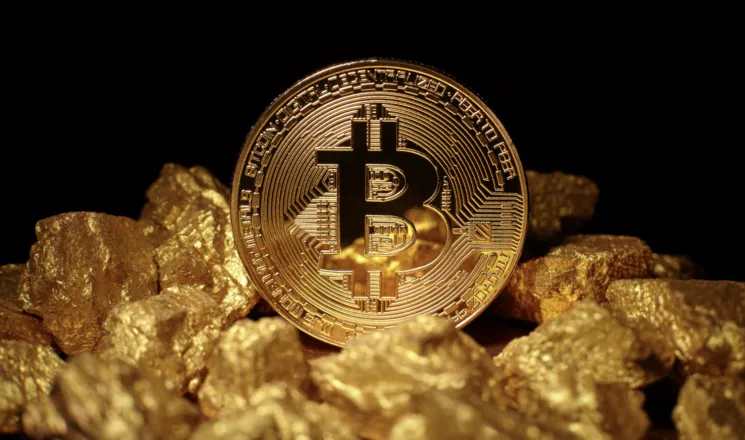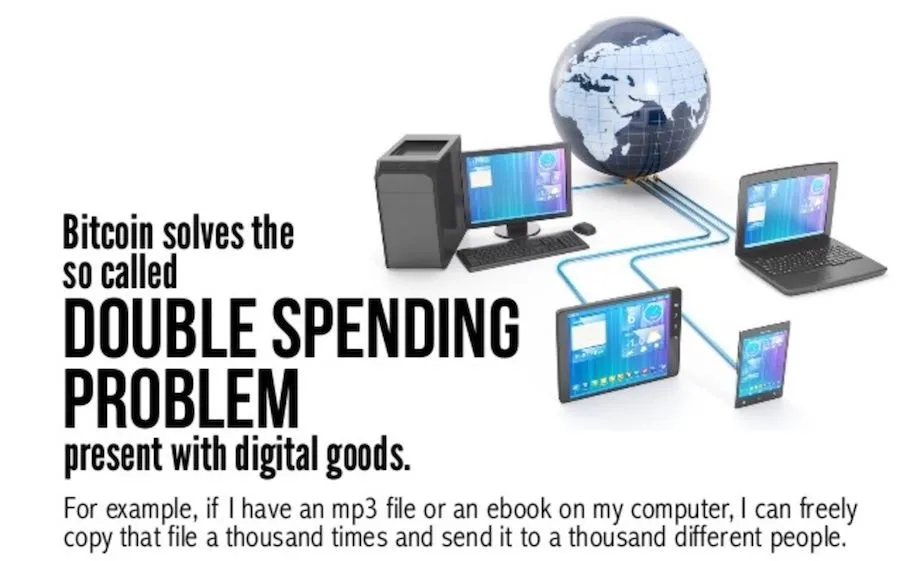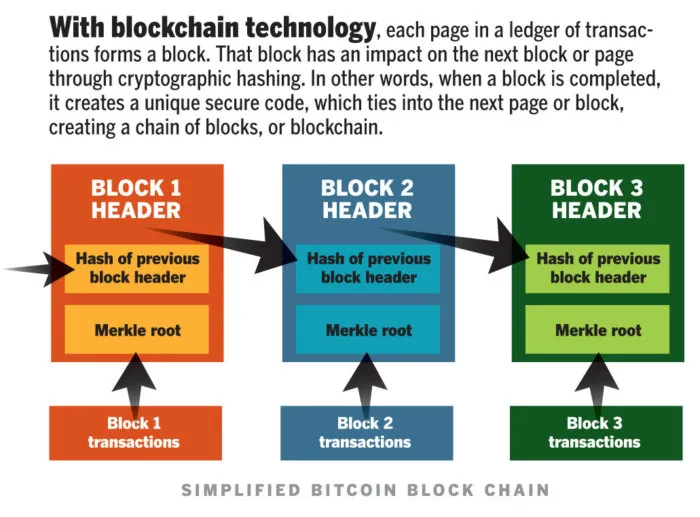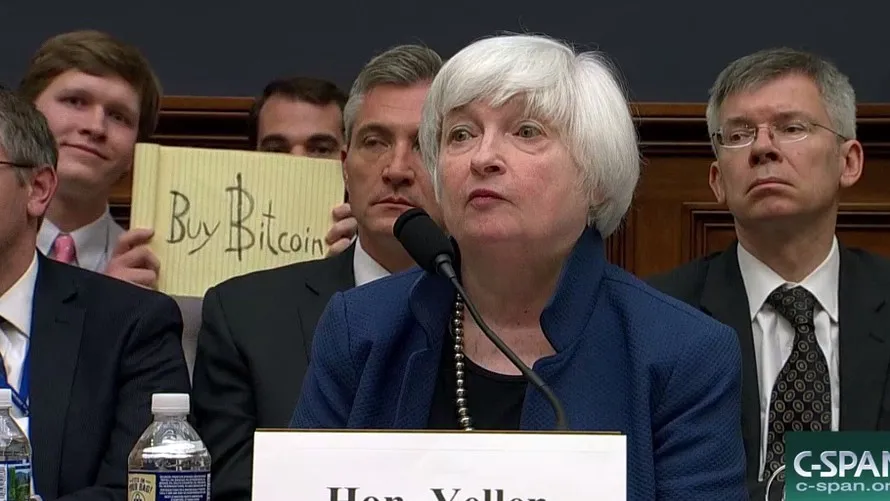
“What the internet did for communications, blockchain will do for trusted transactions.” Ginni Rometty, CEO of IBM
Physical money, is money you can see and hold. If I have a dollar bill and I give it to you then you end up with the dollar bill and I'm left with an empty pocket. My dollar bill was physically put into your possession.
Now, if I have a digital currency and like before I pass that on to you, how do you know that that digital coin is only yours? How do you know that I didn’t make multiple copies? How do you know that I didn't send that same digital coin to multiple people?
Computer scientists call this the double-spend problem and was for a long time the biggest hurdle to creating a useable digital currency until 2009 when a person or a group with the pseudonym Satoshi Nakamoto created the blockchain ledger with a currency called Bitcoin.

The Blockchain ledger
The first thing people asked when introduced to this new blockchain ledger and its Bitcoin, who's going to be in charge of the ledger? Well, it turns out that it doesn't need to be in the hands of one entity, ie centralized since the ledger created by Satoshi, gives a small portion of the chain to everybody on the network. So instead of the blockchain ledger living on a central computer, links of the blockchain are spread out over the whole network of computers. All the transactions that have ever happened, from all time, will be recorded and chained together in this blockchain ledger and also locked to eachother in sequence with cryptography. You can’t cheat it so it will be impossible for me to send you bitcoin I don’t have, because then the chain links wouldn’t sync. So thanks to the linked cryptographic decentralized nature of Satoshi's blockchain, we finally can trust the information/currency/product and the transactions/contracts that happen with them on the blockchain.
This blockchain technology has had its rules defined from the beginning and due to its open source nature, the computer code that makes up the blockchain can be fully trusted upon and is available for any interested programmers to both inspect and improve upon.
Those who participate in mantaining the blockchain ledger on their computers, are known as miners because apart from maintaining, tracking and confirming all transactions on the ledger, they are also mining new coins into existence until they reach the maximum number of 21 million sometime in the far future. Currently we are at 16,774 million bitcoins.
So with Bitcoin we can do an exchange just like we did at the start of this article with physical money. And it’s not only as good as doing a physical transaction, its so much better. The digital exchange only needs the two parties involved. You and me , we don’t need a bank or some other governing body to make it possible or to make it safe or even valid. And due to its digital nature, we can now deal with any amount of bitcoins or even a minute portion of a bitcoin. I can send it with a click of a button anywhere in the world practically instantaneuously and for a very tiny fee.

So as you might have guessed by now, the real star of the show here is the blockchain that Bitcoin rides upon. You see Bitcoin is but the first application that was built on the blockchain and it just happened to be a digital currency. There are currently over 1,300 other coins ridding on the blockchain offering various everyday solutions to help better our world in the form of either currencies, applications, utilities etc. Some of these will succeed and most others wont.

But lets just concentrate on Bitcoin. Is it really worth anything? Well, a lot of people have been arguing over it for a while now. Programmers, economists, politicians and every youtuber out there are all debating the real value of Bitcoin. Some are philosophical, some are smart and some are misinformed. Everyone has their own opinion, so you can't listen to all of them. My opinion, even though I'm just a regular bloke with a computer, Bitcoin and most importantly the blockchain it rides upon, are here to stay and will change the world!
Some other usefull information about Bitcoin
- Scarcity is just one of the reasons for Bitcoins high value. There will only ever be 21 million of them in existence so it cannot be devalued through inflation like regular fiat money.
- All 21 million bitcoins will most probably be mined by the year 2132. However, the vast majority of coins (99%) will have been mined by around 2032, when the block subsidy drops to less than 1 BTC per block. Roughly 20.6 million coins will exist by then, leaving less than 1/2 a million to be mined over the next 100 years.
- The Bitcoin network automatically adjusts the difficulty rate of its minimg so that a new block is produced roughly every 10 minutes, which equals roughly to about 144 blocks per day. Currently as of December 2017, every block is rewarded or "creates" 12,5 bitcoins, so every day there are 1800 Bitcoins created. By mid-2021 each block reward will be halfed again to 6.25 BTC per block.
- The amount of Bitcoins actually in circulation is far lower than the amount of Bitcoins in existence, due to accidental loss or willful destruction. Of the 16 and a half million Bitcoins that have been mined so far, it is estimated that up to 25% of them have already been lost for good.
- Bitcoin itself has never been "hacked", however, several exchanges using bitcoin have been hacked see my previous article. Unfotunately, these have been misreported by some as hacks on Bitcoin itself which is untrue.
- As of December 2017, only 0.5% of the world’s population is using the blockchain technology. The potential for growth is huge when you consider that 50% or 3.77 billion people use the internet and nearly 5 billion people worldwide are on mobile phones.
- 9 out of 10 agree that blockchain will disrupt the banking and financial industry.
UPVOTE & SHARE
If you enjoyed this article I would really appreciate an upvote ;-) You could also help me by resteeming my article for others to find and read, thanks!